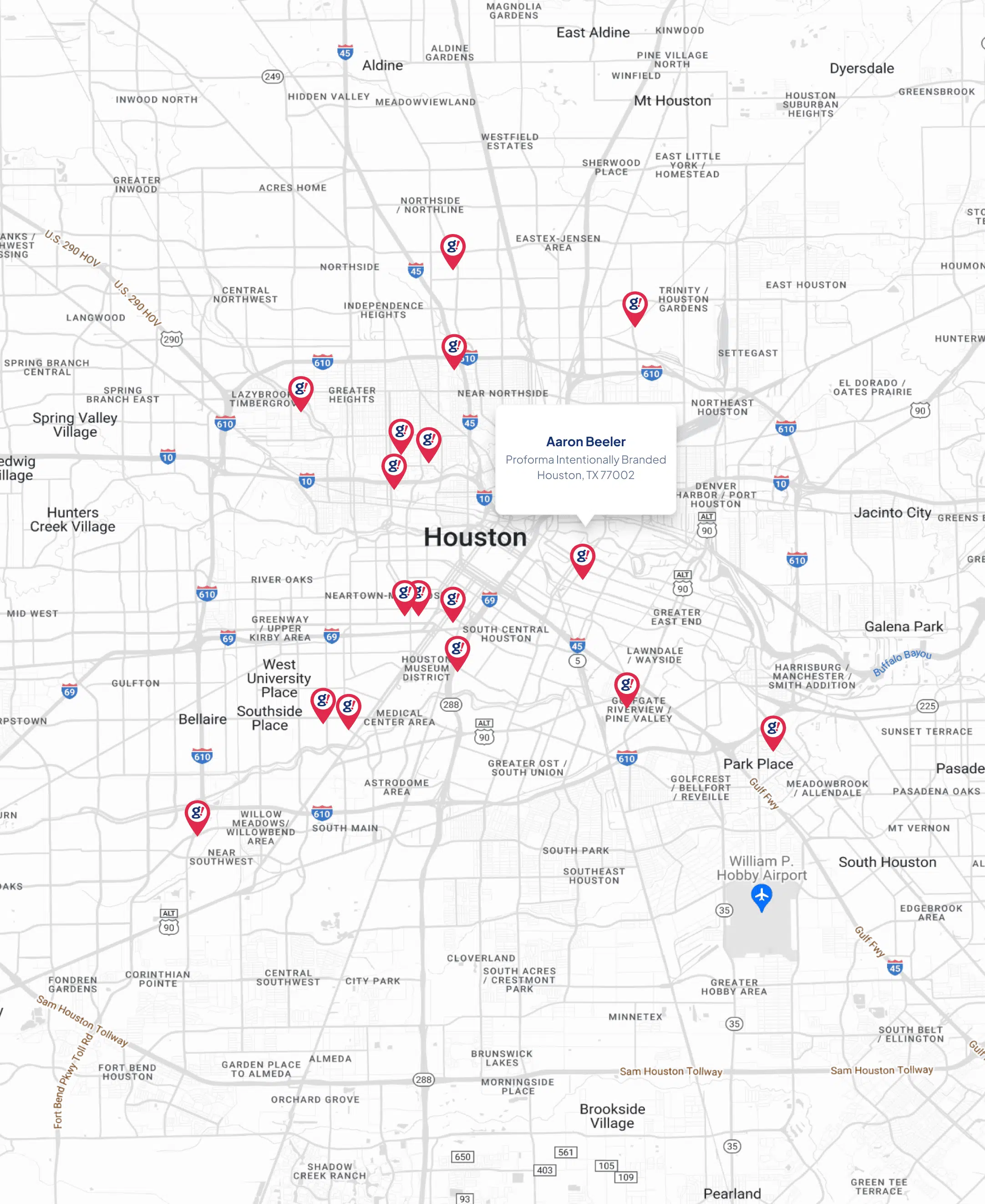The role of typography in web design, and design in general, is often referred to as the silent hero of web design. While images and layouts often grab our attention first, the choice of typeface, font size, and spacing can significantly impact how users interact with your website. In this article, we’ll explore the essential role typography plays in web design and how it influences readability, brand identity, and user experience.
Understanding Typography
At its core, typography is the art and technique of arranging type to make written language legible, readable, and visually appealing. It encompasses various elements, including typefaces, fonts, sizes, spacing, and line heights. When done well, typography enhances a website’s overall aesthetics while ensuring that content is easy to digest.
Importance of Readability
One of the primary goals of typography in web design is readability. A well-chosen typeface can make the difference between a user staying on your site or bouncing away in frustration. Different typefaces have distinct characteristics that can affect how content is perceived. For instance, serif fonts (like Times New Roman) often convey tradition and reliability, while sans-serif fonts (like Arial) offer a modern, clean look.
Furthermore, font size and line height are critical for enhancing readability, especially on mobile devices where screen space is limited. Ensuring that your text is legible at various sizes and distances is essential for retaining user attention.
Brand Identity and Typography
Typography is a powerful tool for conveying your brand’s personality and voice. The fonts you choose can evoke specific emotions and associations, reinforcing your brand identity. For example, a tech company might opt for a sleek, sans-serif typeface to project innovation, while a luxury brand might choose an elegant serif font to convey sophistication.
Creating a cohesive brand identity often involves maintaining a consistent typography style across all platforms. This consistency helps establish trust and recognition, making it easier for users to connect with your brand.
Hierarchy and Structure
Effective typography creates a visual hierarchy, guiding users’ attention to the most critical information on your website. By varying font sizes, weights, and colors, you can establish a clear structure that helps users navigate your content. For example, larger headings draw attention and indicate section breaks, while smaller body text provides detailed information.
Utilizing typography to establish hierarchy not only improves user experience but also makes content more scannable, allowing users to find the information they need quickly.
Consistency is Key
Consistency in typography is vital for creating a unified look and feel across your website. Using a defined set of fonts for headings, subheadings, and body text ensures that your site remains visually coherent. Consider developing a style guide or design system that outlines your typography choices, including font families, sizes, and spacing guidelines. This approach will streamline your design process and help maintain consistency, even as your site grows.
Accessibility Considerations
In today’s digital landscape, accessibility is more important than ever. When choosing fonts, it’s crucial to consider users with visual impairments. Opting for accessible fonts—those that are clear and easy to read—ensures that all users can engage with your content.
Best practices for typography accessibility include using sufficient color contrast, avoiding overly decorative fonts, and ensuring that text remains legible at different sizes. By prioritizing accessibility, you create an inclusive experience that welcomes all users.
Current Typography Trends in Web Design
Typography trends continually evolve, and staying updated can enhance your design projects. Some current trends include bold, eye-catching fonts, the use of variable fonts that adjust to screen size, and the incorporation of hand-drawn typography that adds a personal touch. Typography trends in web design for 2024 reflect the evolving needs of users and the desire for fresh, dynamic aesthetics that enhance readability, user engagement, and overall visual appeal. Here are some of the key typography trends expected to shape web design this year:
1. Variable Fonts
Variable fonts continue to gain momentum in 2024. These fonts allow for greater flexibility by including multiple styles or weights within a single file. Designers can seamlessly adjust weight, width, slant, and other characteristics to create dynamic typography that adapts to different screen sizes and contexts without sacrificing load speed or performance.
-
Why it’s Trending:
Variable fonts provide creative control without the need to load multiple font files, reducing website load times and improving user experience.
2. Bold and Oversized Fonts
Big, bold fonts are a powerful trend in 2024. Designers are using oversized typography to make a strong visual impact, especially in headlines and hero sections. This trend helps create attention-grabbing focal points, breaking away from conventional, understated designs.
-
Why it’s Trending:
Larger, bolder typography immediately draws attention, helping brands make a memorable statement. It’s also highly legible, making it accessible across various devices and screen sizes.
3. Retro and Vintage-Inspired Fonts
2024 sees a revival of nostalgic, retro typography, particularly fonts inspired by designs from the ’70s, ’80s, and ’90s. Rounded serifs, playful scripts, and classic typefaces are being modernized with cleaner lines and brighter colors to fit contemporary web aesthetics.
-
Why it’s Trending:
The retro revival speaks to both nostalgia and uniqueness, allowing brands to stand out by mixing the old with the new. This playful use of type brings a human and emotional element to digital design.
4. Minimalist, Elegant Serif Fonts
After years of dominance by sans-serif fonts in modern web design, serif fonts are making a comeback in a more refined and elegant form. Many websites are incorporating minimalist serif fonts for body text, adding a touch of sophistication and maturity without overwhelming the design.
-
Why it’s Trending:
Serif fonts are great for readability and bring a sense of elegance and trust to a design. They’re especially popular in industries such as fashion, media, and editorial web design.
5. Kinetic Typography (Animated Text)
In 2024, more websites are incorporating kinetic typography or animated text to add movement and personality to their content. This trend involves text that moves, changes, or shifts in real-time as users scroll or interact with the page. It’s a dynamic way to engage visitors and guide them through the site’s narrative.
-
Why it’s Trending:
Animation helps grab attention, enhances storytelling, and encourages interaction, all while creating a more immersive user experience. Kinetic typography also adds a modern, tech-savvy touch to the overall design.
6. Layered Typography
Layered typography is a creative trend where text overlaps images, videos, or other text to create a sense of depth and visual interest. By strategically layering elements, designers can create a three-dimensional look, adding texture and complexity to flat designs.
-
Why it’s Trending:
This technique adds visual drama and intrigue, inviting users to explore the design more deeply. It also allows for more flexible layouts, particularly in websites that feature heavy visual content.
7. Outline Typography
Outline fonts, where the interior of the letters is transparent or hollow, are gaining popularity in 2024. This type of typography is often used for large headings or in logos, creating a sleek and modern effect that draws the eye.
-
Why it’s Trending:
Outline typography creates a minimalist, futuristic feel that fits perfectly with clean, modern web design. It also provides opportunities to layer the outlined text over imagery without overwhelming the visual elements.
8. High Contrast Typography
In 2024, high contrast between type elements (such as pairing thick, bold fonts with thin, light fonts) is being used to create striking visual tension. This contrast helps establish hierarchy and directs the viewer’s focus, making it easier to differentiate between sections of content.
-
Why it’s Trending:
High contrast typography offers a modern, sophisticated look and helps guide the user’s attention, improving the overall readability and user experience.
9. Custom Handwritten Fonts
Custom handwritten fonts are becoming a popular way to give websites a personal, authentic feel. Whether it’s for a signature-style logo, a note, or text accents, handwritten fonts add a unique, human touch to web design.
-
Why it’s Trending:
Handwritten fonts feel personal and approachable, and they help brands differentiate themselves with a bespoke, one-of-a-kind style. This is especially appealing for creative industries, personal brands, and e-commerce sites.
10. Maximalism in Typography
Maximalism is the opposite of minimalist design—it’s all about bold, busy, and daring typography that takes center stage. This trend sees the use of decorative, experimental fonts, multiple typefaces in a single layout, and vibrant color schemes that make text pop.
-
Why it’s Trending:
Maximalism allows for creativity without constraints, making typography an art form rather than just a functional element. It reflects a growing desire for bold self-expression in digital design.
11. Gradients and Color Blends in Typography
Gradients have been a strong trend for a while, but in 2024, they’re being integrated into typography as well. Designers are experimenting with colorful, blended text, incorporating gradient overlays that give the typography depth and visual interest.
-
Why it’s Trending:
Gradients create a modern, vibrant look that stands out. Using them in typography adds a unique twist to an otherwise static element and can give a site a sleek, contemporary feel.
12. Environmental and Nature-Inspired Fonts
As sustainability becomes a growing priority, fonts that evoke a sense of nature and environmental consciousness are rising in popularity. These fonts are often organic in shape, with soft edges and earthy tones, complementing websites with eco-friendly or sustainable messaging.
-
Why it’s Trending:
The trend aligns with the global movement toward sustainability and resonates with users who prioritize environmentally conscious choices. It gives a natural, grounded feel to digital spaces.
Tools and Resources
To help you navigate the world of typography, consider using tools like Google Fonts or Adobe Fonts for a vast selection of typefaces. Typography calculators can also assist in determining optimal line heights and spacing for your content. Additionally, many resources—such as books, online courses, and design blogs—offer valuable insights into typography principles and practices.
Conclusion
Typography plays a crucial role in web design, influencing everything from readability to brand identity. By understanding and applying typography principles, you can enhance the overall user experience and create a visually appealing website that effectively communicates your brand’s message.
As you embark on your web design journey, don’t hesitate to experiment with different typography styles. The right choice can make all the difference in engaging your audience and elevating your online presence.








